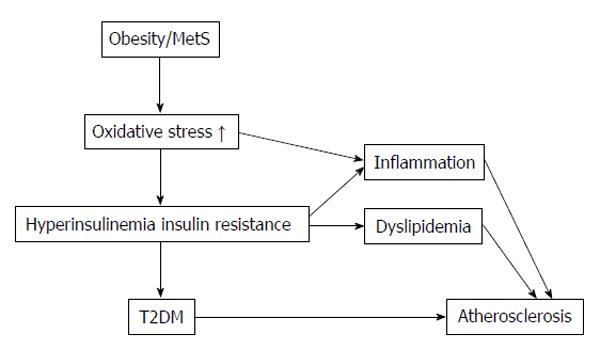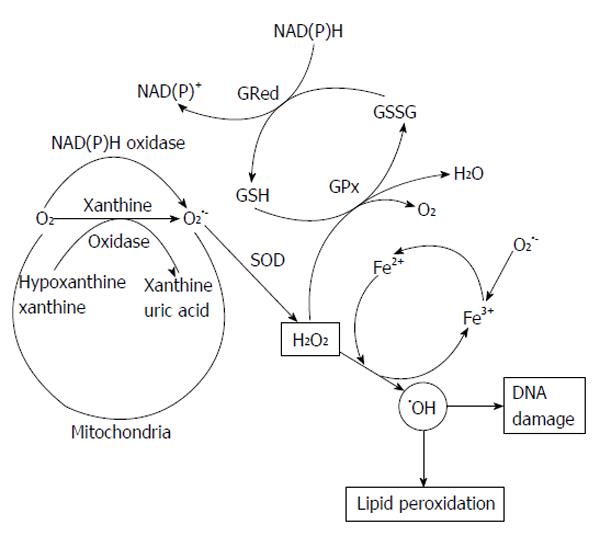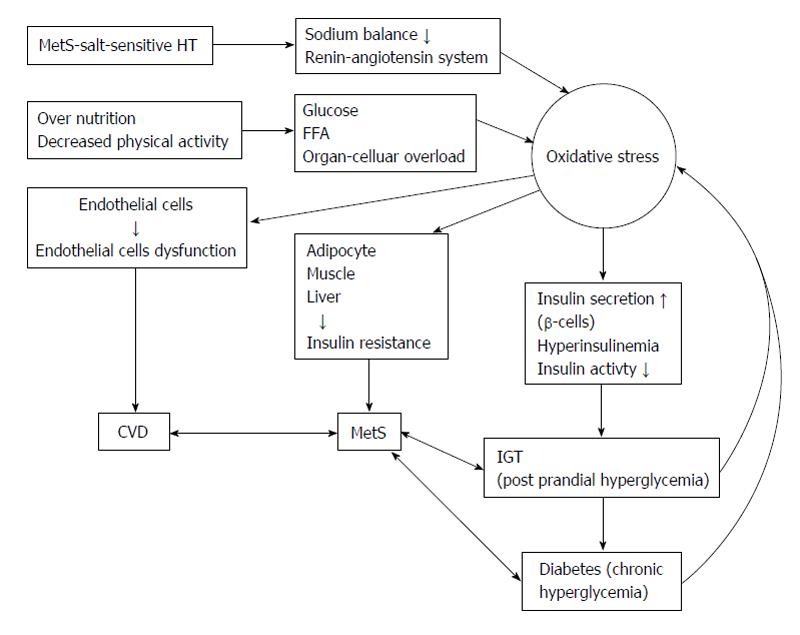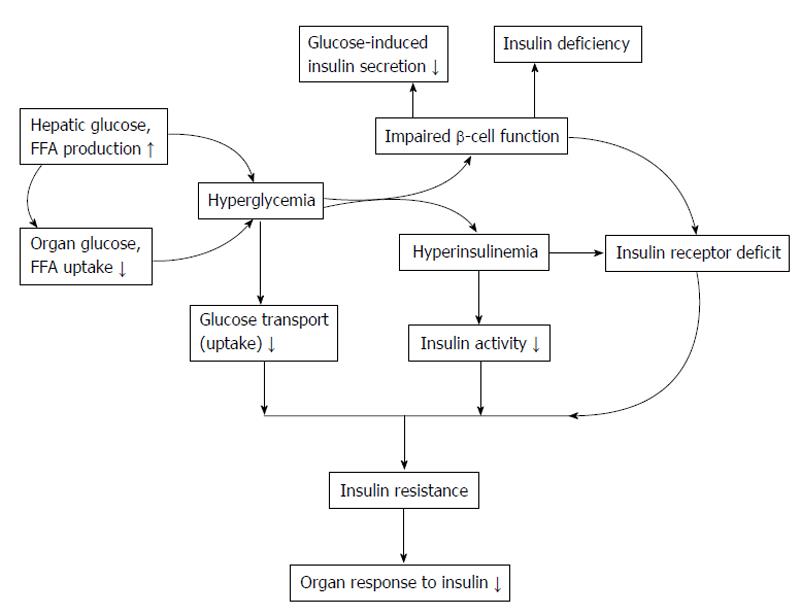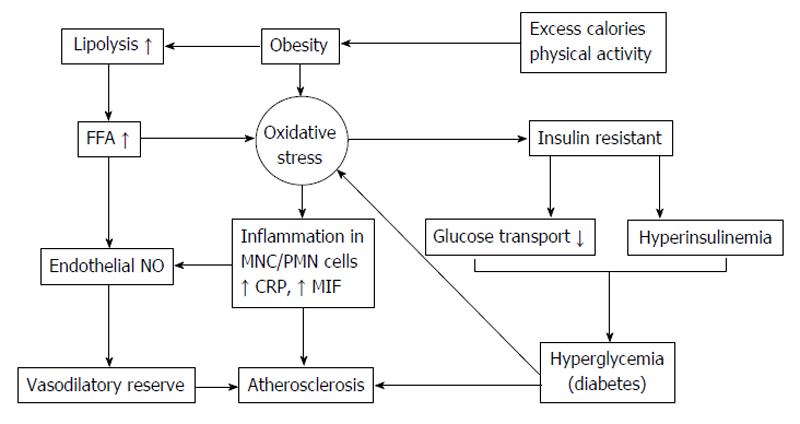Copyright
©The Author(s) 2015.
World J Diabetes. Apr 15, 2015; 6(3): 456-480
Published online Apr 15, 2015. doi: 10.4239/wjd.v6.i3.456
Published online Apr 15, 2015. doi: 10.4239/wjd.v6.i3.456
Figure 1 Summarized of obesity and metabolic syndrome elevate in oxidative stress.
T2DM: Type 2 diabetes mellitus; MetS: Metabolic syndrome.
Math 1 Math(A1).
Figure 2 Increased oxidative stress by xanthine oxidase.
NADH: Nicotinamide adenine dinucleotide.
Figure 3 The chain reaction of lipid peroxidation.
Math 2 Math(A1).
Figure 4 Summarized the increasing reactive oxygen species in obesity, metabolic syndrome and salt sensitive hypertension.
FFA: Free fatty acid; MetS: Metabolic syndrome; HT: Hypertension; IGT: Impaired glucose tolerance.
Figure 5 Summarizes the reactive oxygen species associations with atherosclerosis and sources of reactive oxygen species production in type 2 diabetes.
oxLDL: Oxidized low density lipoprotein; FFA: Free fatty acids; AGEs: Advanced glycation end-products; VSMC: Vascular smooth muscle cells; ROS: Reactive oxygen species.
Figure 6 Insulin resistancedevelopment and consequence of β-cell dysfunction.
FFA: Free fatty acid.
Figure 7 Summarized the etiology of the type 2 diabetes mellitus pathogenesis.
FFA: Free fatty acid; NF-κB: Nuclear factor-κB; TNF-α: Tumor necrosis factor α.
Figure 8 Connection between life style, oxidative stress, insulin resistance, inflammation and atherosclerosis.
FFA: Free fatty acid; NO: Nitric oxide; MNC: Mononuclear cells; PMN: Polymorpho nuclear cells; CRP: C-reactive protein; MIF: Migration inhibitory factor.
- Citation: Tangvarasittichai S. Oxidative stress, insulin resistance, dyslipidemia and type 2 diabetes mellitus. World J Diabetes 2015; 6(3): 456-480
- URL: https://www.wjgnet.com/1948-9358/full/v6/i3/456.htm
- DOI: https://dx.doi.org/10.4239/wjd.v6.i3.456









